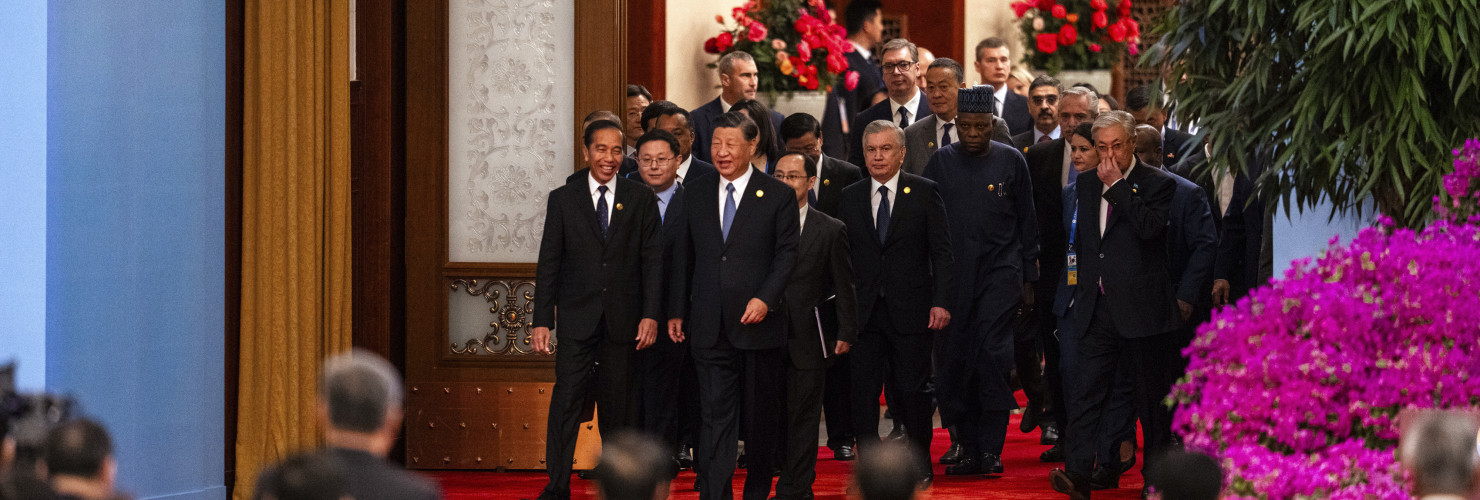

Don’t count on China’s Belt and Road Initiative to disappear
The BRI is not set to fade away, says Jacob Gunter. It has already changed China’s position in the world, and it will continue to do so moving forward.
While China hosted a multitude of partners at the Belt and Road Forum in Beijing at the end of October, many of us in Western capitals are pouring over a decade of entrails to try to determine the fate of Xi Jinping’s signature foreign policy – the Belt and Road Initiative (BRI). The initiative has developed over the last 10 years to cover much of the globe and to bring China’s financial, industrial, and commercial strength to bear in infrastructure development.
However, as the years have passed, the scale of BRI activity has ebbed, and some have predicted (or even hoped for) the policy’s imminent fading into the ether. As we enter the second decade of the BRI and consider its impact, we should keep in mind three things.
First, the diminishing amount of capital allocated to the BRI is not indicative of the initiative’s failure. Over the years, the BRI has been compared to the Marshall Plan, and while hardly a one-to-one comparison, there is some value in this framing. The vast bulk of the capital injected into the Marshall Plan came in a surge over just a few short years, and it would be absurd to judge it as a failure because the scale of capital flows diminished over time. The BRI should similarly be judged not on capital flows, but on the impact that the projects under its umbrella have had.
China has a trade deficit with only 20 countries
Those impacts are, of course, not universally positive for both China and the host country, and benefits are often more aligned with Beijing’s interests than anyone else’s. China has a trade deficit with only 20 countries, and many BRI countries have seen their own deficit with China balloon over the last decade. The picture gets even messier when looking at the details of bilateral debt relationships. Nevertheless, the BRI was not intended to be a never-ending stream of large-scale infrastructure projects, and not all of them were pursued with commercial interests in mind.
Second, measuring the success of the BRI based on the efficiency of a traditional return on investment is using the wrong yardstick. Instead, BRI projects should be measured by their contribution to Beijing’s broader strategic goals. Underlying much of the BRI is Beijing’s goal to securitize its economic ties with the rest of the world. Part of that is China’s fear of further restrictions on exports in key markets. Similarly, Beijing fears losing access to essential inputs like energy, minerals, and food, much of which is provided by the United States, Canada, Australia, and other rivals. In that sense, one key aim of the BRI was to cement China’s economic ties with a multitude of partners keen to avoid choosing sides in the China-U.S. rivalry.
The BRI has been quite successful
To that end, the BRI has been quite successful. Much of the BRI’s transportation infrastructure – like ports, railways, and highways – have facilitated expanded bilateral trading relationships, and while new partners in the Global South cannot fully replace developed markets, they can make a dent. Similarly, the BRI has done a lot to expand production and transportation capacity for oil and gas, iron, copper, cobalt, and lithium, and foodstocks like soybeans. We might view some of that as unfounded paranoia or as having poor return on investment, but Beijing sees these as critical steps for China’s economic security.
Third, the BRI is likely to evolve as Beijing’s own strategic goals develop. The first decade of the BRI focused heavily on building up the traditional infrastructure needed to facilitate stronger bilateral trade ties. The second is likely to focus more on what Beijing calls the “Digital Silk Road” (DSR). This has been a part of the BRI for some time, but there is a growing strategic imperative to prioritize it moving forward. For similar reasons, we may see a stronger focus on green energy projects to bolster China’s exports of its solar panel and wind turbine production capacity.
As China’s telecoms and digital champions face growing scrutiny or outright restrictions in the United States, Europe, Japan, and elsewhere, it will become essential to focus on more neutral markets. As critical firms like Huawei and ZTE finish building out China’s own 5G network, they will need to unlock demand overseas to keep the revenue flowing that they need for R&D to close critical technology gaps with the U.S. and allies (like in semiconductors). One way to facilitate that is to push the DSR harder and use China’s state-run banks to finance 5G build-out along the BRI. All the better that China’s digital champions may be able to piggy-back and expand China’s digital ecosystem to other markets.
The BRI is not set to fade away, and it has already changed China’s position in the world. It will continue to do so moving forward. Rather than hoping it will diminish, it is imperative that Europe, the United States, Japan, and their allies think about how to compete with an evolving BRI that is likely to play a sizable roll in the digital and green transitions of much of the Global South, not just focus on the traditional infrastructure that has dominated its first decade.
This article was first published by The Diplomat on October 20, 2023.
